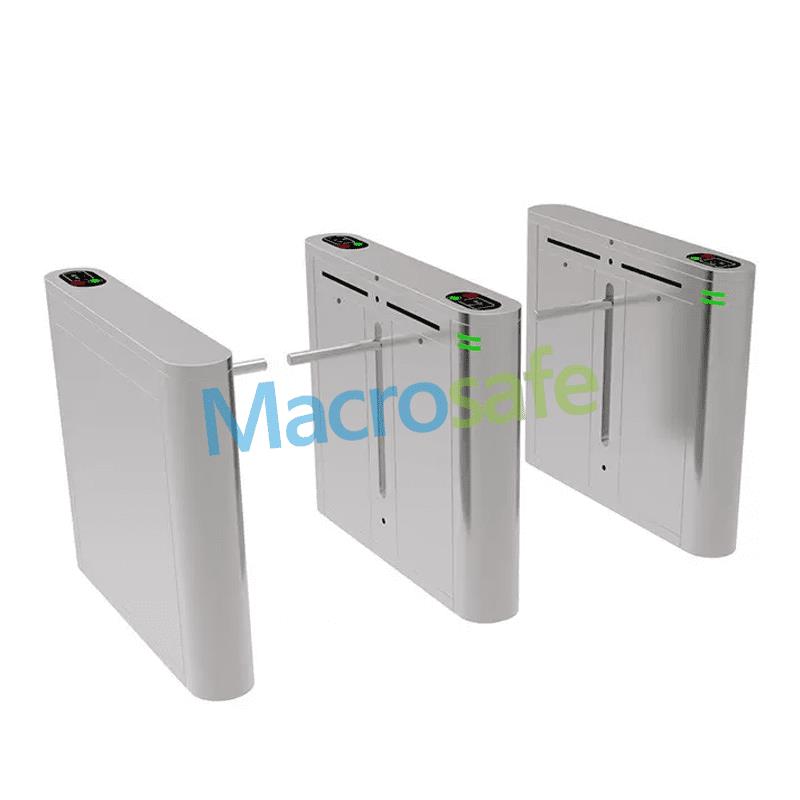Managing crowds and ensuring safety in high-traffic areas such as stadiums, concert venues, and amusement parks can be a daunting task. Drop arm turnstiles have emerged as an effective solution to address these challenges. These turnstiles offer numerous benefits that contribute to crowd management and safety measures in various environments. This article will delve into the ways in which drop arm turnstiles contribute to crowd management and enhance safety.
Efficient Flow Control:
One of the primary advantages of drop arm turnstiles in crowd management is their ability to efficiently control the flow of people. These turnstiles are designed to allow only one person to pass through at a time, thereby preventing overcrowding and congestion in high-traffic areas. By regulating the number of individuals in a specific space, drop arm turnstiles help maintain an organized and controlled environment, ensuring a smoother flow of crowds.
Enhanced Security:
Ensuring the safety and security of large crowds is a top priority in any public space. Drop arm turnstiles contribute significantly to this aspect by acting as physical barriers and allowing entry only to individuals with valid tickets or credentials. By integrating access control systems such as barcode scanning or RFID technology, turnstiles can quickly validate tickets and credentials, minimizing the risk of unauthorized entry and helping prevent potential security breaches.
Fast Throughput:
Drop arm turnstiles are designed for efficient and speedy throughput, making them ideal for managing large crowds. The automated operation of these turnstiles allows for quick processing of individuals, significantly reducing waiting times. This can alleviate congestion at entry points and ensure a smoother and more comfortable experience for visitors. The fast throughput capability of drop arm turnstiles is particularly beneficial during peak periods or when dealing with time-sensitive events.
Customization for Different Events:
Drop arm turnstiles offer a high level of customization, enabling them to cater to the unique requirements of different events. These turnstiles can be programmed to accommodate specific entry or exit directions, control access to particular areas within the venue, or adapt to different ticketing systems. Such customization ensures that crowd management strategies can be tailored to the needs of specific events, enhancing safety and optimizing the overall experience for attendees.
Emergency Egress:
In the event of an emergency, quick and safe evacuation is crucial. Drop arm turnstiles are designed to facilitate emergency egress in crowded environments. They can be configured to allow unobstructed passage in the opposite direction, enabling smooth and rapid evacuation. In emergencies where controlling the flow of people becomes critical, drop arm turnstiles can be temporarily locked to prevent panic and ensure a controlled and orderly evacuation process.
Integration with Security Systems:
Drop arm turnstiles can be seamlessly integrated with security systems to enhance crowd management and safety. By connecting turnstiles with video surveillance cameras and alarms, any suspicious or unusual activities can be detected promptly. This integration helps security personnel monitor crowd behavior, identify potential risks, and respond quickly to any security concerns. The data generated by these integrated systems also provides valuable insights that can be used to improve future crowd management strategies.
Conclusion:
Drop arm turnstile significantly contribute to crowd management and safety in various environments. With their ability to control the flow of people, enhance security measures, provide fast throughput, offer customization options, facilitate emergency egress, and integrate with security systems, these turnstiles have proven to be invaluable tools in managing large crowds safely and efficiently. By implementing drop arm turnstile, organizations can create a secure and organized environment, ensuring a positive experience for attendees while mitigating potential risks associated with overcrowding and inadequate crowd control.











